Yitzhak Katz
Childhood
Yitzhak Katz was born on August 9th, 1921, in Sokal, the son of Leo Eliezer Katz and Frida Shulamit Katz, née Tabak.
Sokal, a small town on the Bug river, had until 1918 been part of the Austro-Hungarian Empire. By the time Yitzhak was born, it was within the borders of newly reborn Poland. It is now in Ukraine.
The Polish-Russian War, which had ended in March, had brought devastation to Sokal and its region. The Jewish population had been particulartly affected, with an estimated 100 000 Jewish civilian killed in pogroms during the entire duration of the war. A few years earlier, Yitzhak's father Leo had been enlisted in the Austrian Army during WW1, and his mother, Frieda, had fled advancing armies to Czechoslovakia.
This violence and the resulting poverty were most likely the reason why the family would uproot themselves and go west to Germany.
Yitzhak's father Leo had come to Gera in Thuringia, Germany, around 1920, and was probably not in Sokal when Yitzhak was born. Two of his brothers, Aron and Mathes already lived there and he joined them there to build a new, better life for himself and for his family. After he had established himself, he would bring the rest of his family.
Gera
Yitzhak, his mother, and his sister Toni, left Sokal and came to Gera, probably in late 1921 or early 1922. Yitzhak may have been as young as 6 months old.
According to his older sister Toni, she remembered their father waiting for them at the train station and her mother was carrying Yitzhak as he was still too young to walk.
Having left Poland before turning one, Yitzhak would have had no memories of "the Old world", Germany being "home" and German his mother tongue. Although no records survive, we can assume that, like his older sister Toni, Yitzhak attended the elementary school in Gera. In addition, he probably also attended a religious school one afternoon a week, possibly the Jewish school in Meistergäßchen.
When the family first arrived in Gera, they lived for a very short time upstairs in a hotel, near the marketplace. They later moved into an apartement on MargaretenGasse, which my mother would later describe as a "nice, middle class, comfortable four room apartment, with kitchen, bathroom, mansardes."
His father owned a store that carried linen and clothes, and did well enough to provide his family with a comfortable, middle-class life. The store was in the front of the building, whith the family living upstairs. MargaretenGasse, situated between Roßplatz and the Mühlengasse, led to Roßplatz, which appears on all contemporary photos to have been a very nice, commercial area near the center of the city. The family lived at that address until 1937 or 1938. The street would be later be destroyed during the Allied bombings in 1945.
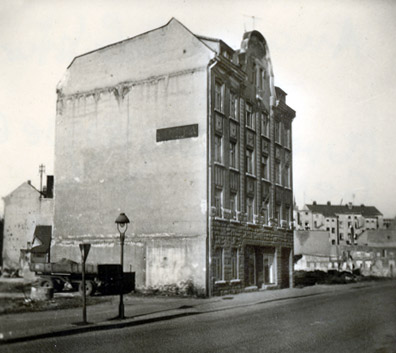
The Katz house on MargaretenGasse, Gera.
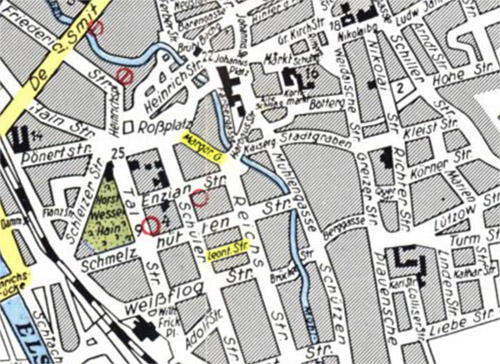
Map of Gera: Margaretengasse and Leontinenstrasse.
The two homes and store locations in Gera: 6 Margarentgasse, then 8 Leontinenstrasse.
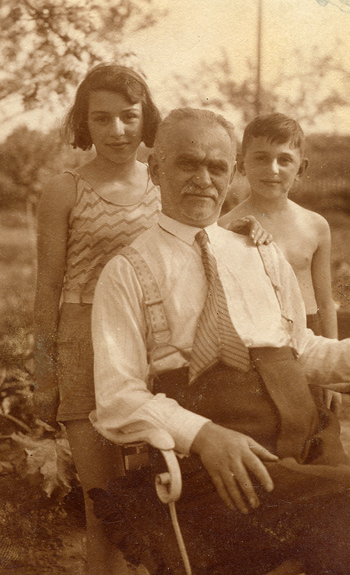
Yitzhak, Leo and Toni - Gera, 1932
Hitler years
After Hitler's rise to power, Yitzhak became a victim of anti-Jewish discrimination in school, and most likely was forced to quit school when he turned 14. Despite the anti-Jewish laws, school was mandatory until the age of 14, even for Jewish children. After the age of 14 however, Jewish students were pressured to leave school. This is what happened to Yitzhak's older sister, Toni, who left school when she turned 14. Although his family has stated that he left school in 1937, it can be assumed that Yitzhak had to leave school earlier, sometime between 1935 and 1936.
Yitzhak then joined the Jewish sports organization Maccabi Hazair and the pioneerim youth group Habonim Noar Chaluzi. It is not known whether he started and apprenticeship after leaving school, like his sister who became an apprentice in the Max Biermann department store.
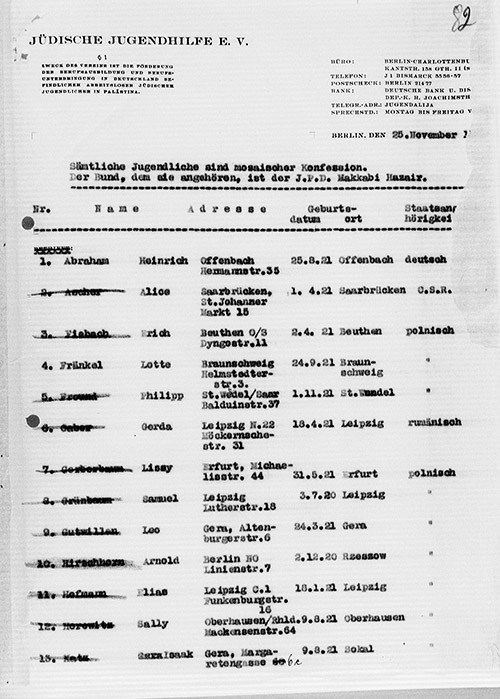
List of members of Maccabi Hatzair from the "Jüdische Jugendhilfe" (Jewish Youth Aid) - Yitzhak's name is last on the page.
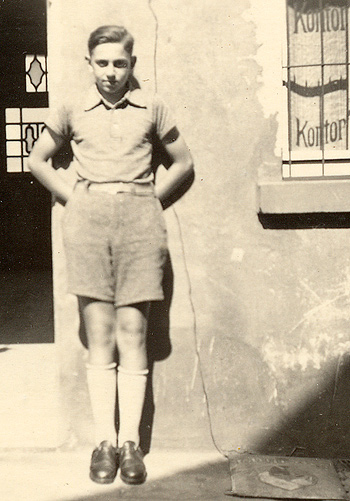
Yitzhak in Gera.
(Photo collection of Shulik Mir)
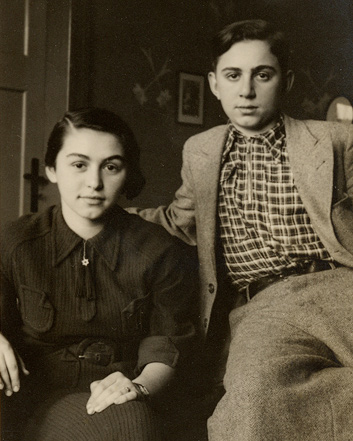
Yitzhak and Toni in Gera, ca October 1936
(Photo collection of Shulik Mir)
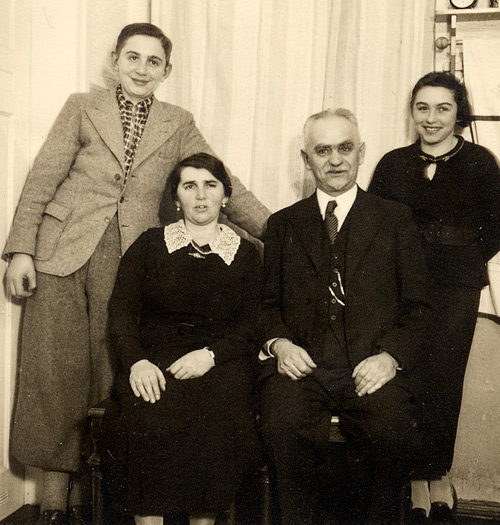
Yitzhak, Frida, Leo and Toni at home in Gera, October 1936
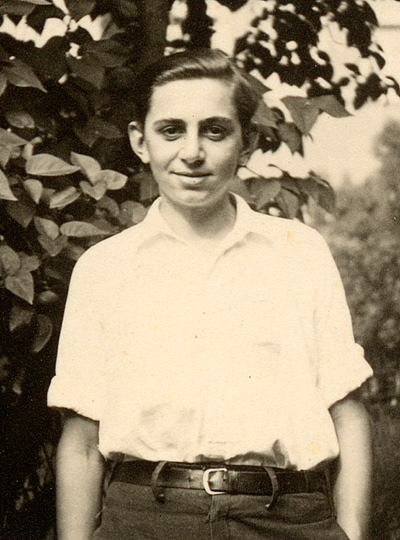
Yitzhak in Gera
(Photo collection of Shulik Mir)

Yitzhak in Gera, 1936
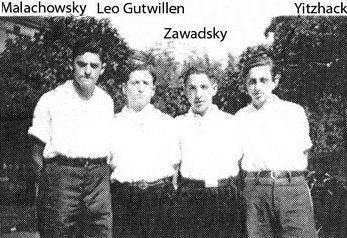
Yitzhak with members of Habonim Noar Chaluzi, ca 1936
(Photo collection of Shulik Mir)
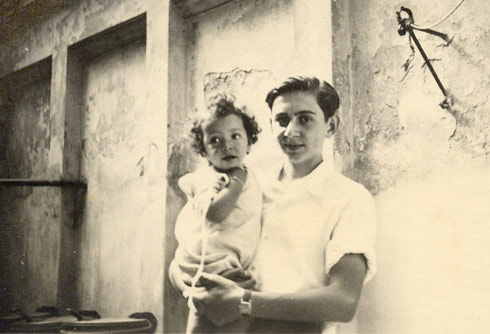
Yitzhak with Aviva Cohn, the daughter of their "preacher", ca 1936
(Photo collection of Shulik Mir)
Leaving Germany
Convinced that there was no future hor him in Nazi Germany, Yitzhak decided go to Palestine. Leo and Frida parents didn't want him to leave, but his decision was made, and on August 10, 1937, his immigration form was approved by the British Passport Control Office in Berlin.
A few days later, on August 15, the family posed for a series of photos he would take with him - the last photos of the family together, and the last photos of Leo and Frida.
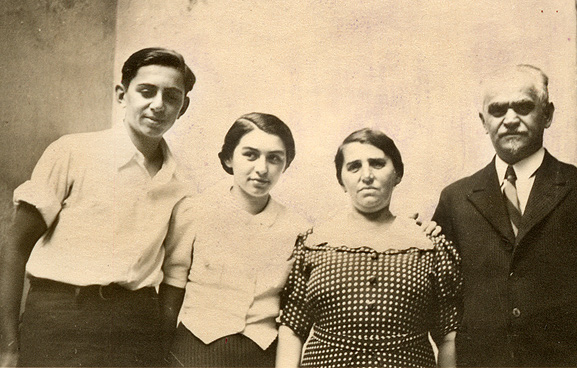
Leo, Frida, Yitzhak and Toni. Gera, August 15, 1937.
(Photo collection of Shulik Mir)
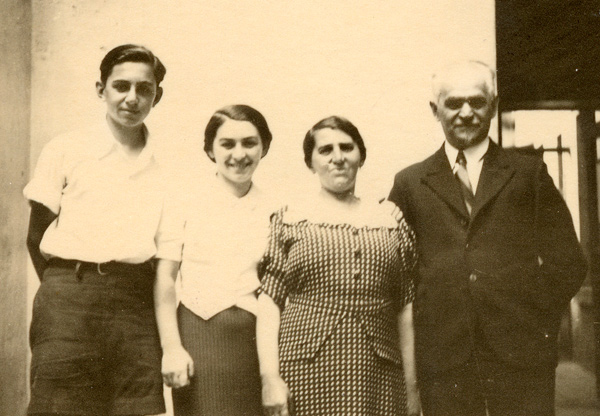
Leo, Frida, Yitzhak and Toni. Gera, August 15, 1937.
A few days after these photos were taken, Yitzhak boarded a ship to Palestine with Aliyat Ha-noar (Youth Aliyah), along with a group of friends. He arrived in Haifa on August 30, 1937.
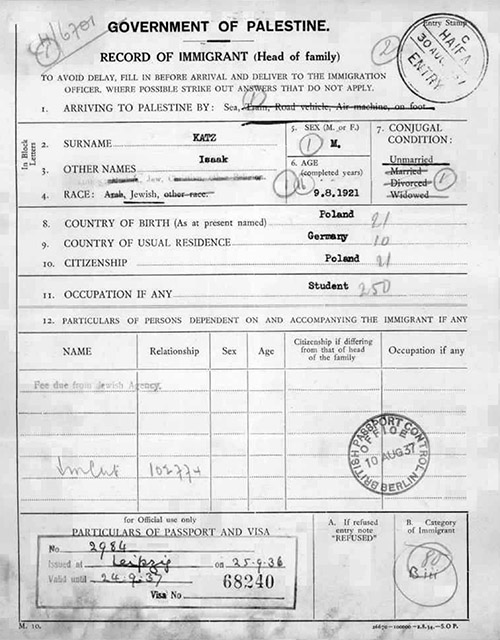
Record of Yitzhak's entry in Palestine on August 30, 1937.
Eretz Israel
Upon his arrival in Palestine, he first lived in Shfeya, originally a village for young orphans from Europe that had been turned into a Youth Aliyah village. There, Yitzhak received training for a few months. It was when he arrived in Israel that he decided for the first time not to fast for Yom Kippur: he hid in the shower to eat in secret.
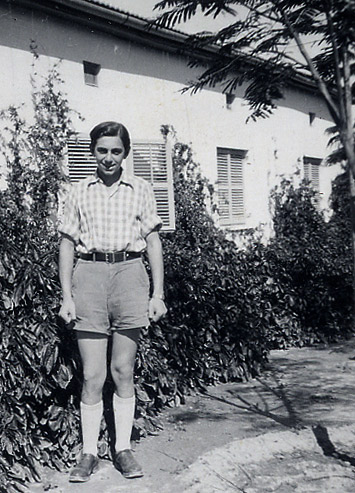
Yitzhak - kibbutz (Shfeya? Degania?)
(Photo collection of Shulik Mir)
Yitzhak then went to the Degania Aleph kibbutz on the Kineret. He was 17-18.
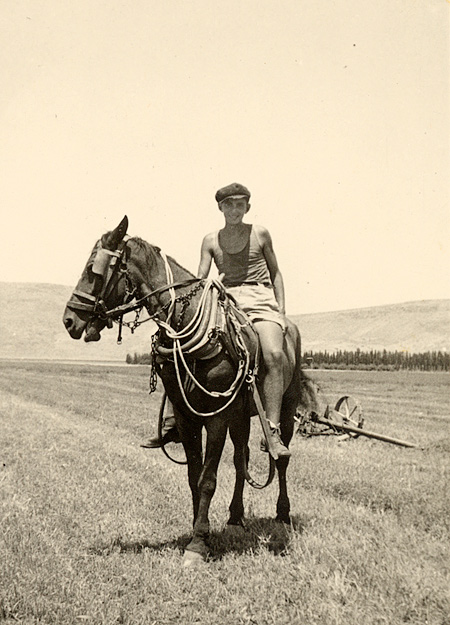
Yitzhak - kibbutz Degania
(Photo collection of Shulik Mir)
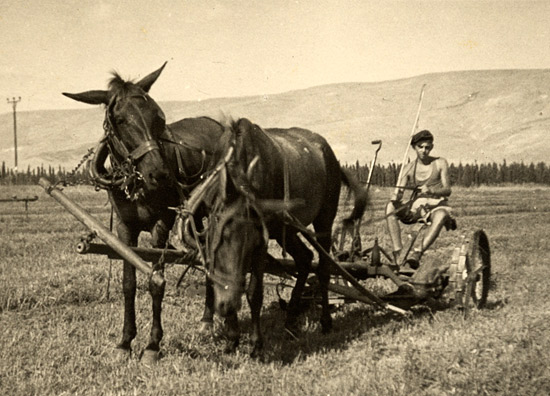
Yitzhak - kibbutz Degania
(Photo collection of Shulik Mir)
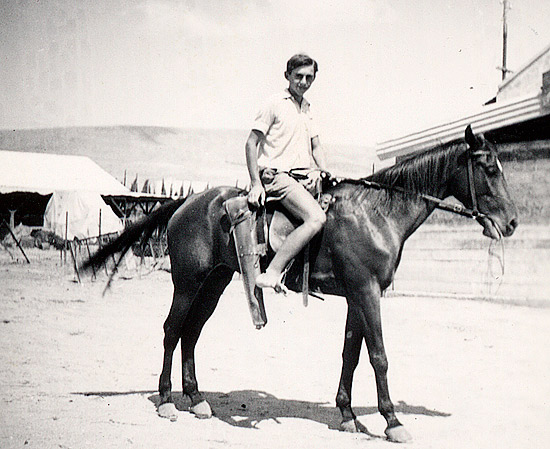
Yitzhak - kibbutz Degania
(Photo collection of Shulik Mir)
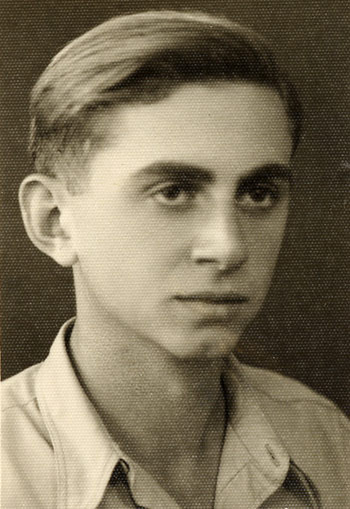
Yitzhak - 1941
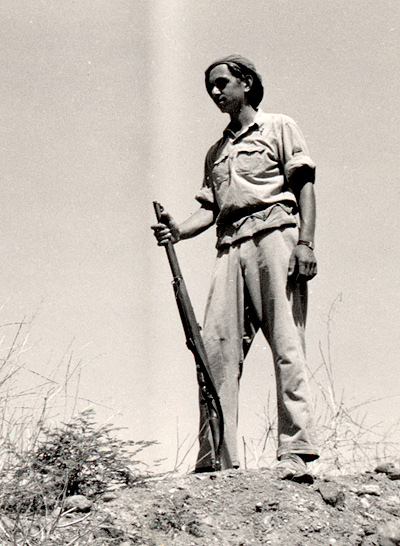
Yitzhak - Haganah?
(Photo collection of Shulik Mir)
Yitzhak then went to Kibbutz Gezer* were he was in charge of the finances for 2 years, possibly around 1939-1941.
*Note: Kibbutz Gezer was founded in 1945 by Youth Aliyah graduates, so the name of the kibbutz must have been different
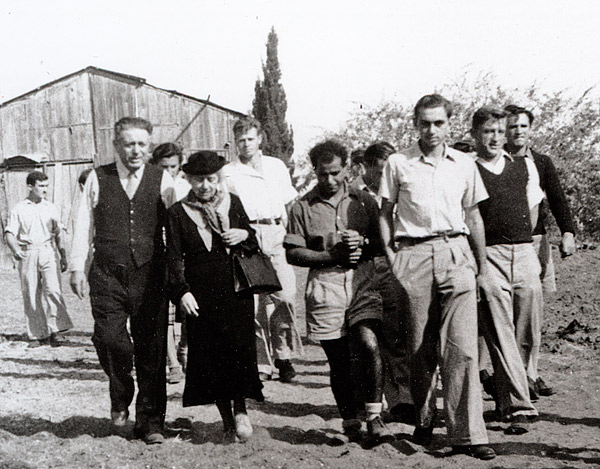
Henrietta Szold, founder of Hadassah who directed the Youth Aliyah. Yitzhak is third from the right.
WW2
Around 1941, Yitzhak left the kibbutz and volunteered in the British Army, where he served for four years. He belonged to the Palestinian Battalion, a Jewish force created in August 1942, as the "Palestine" patch on his shoulder attests.
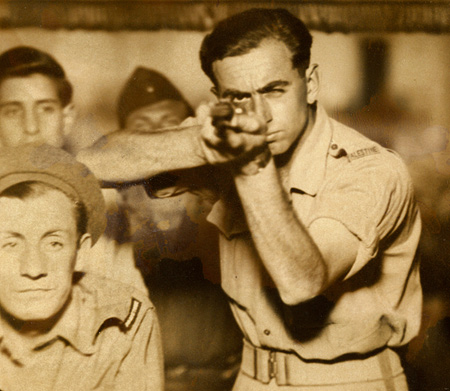
Yitzhak, Malta
(Photo collection of Shulik Mir)
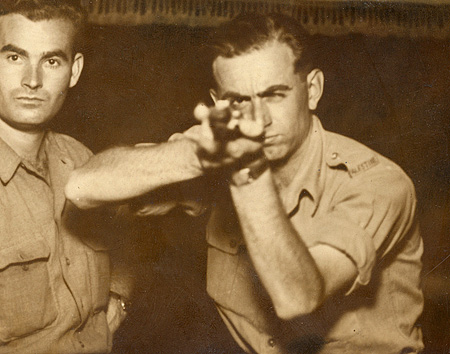
Yitzhak, Malta
(Photo collection of Shulik Mir)
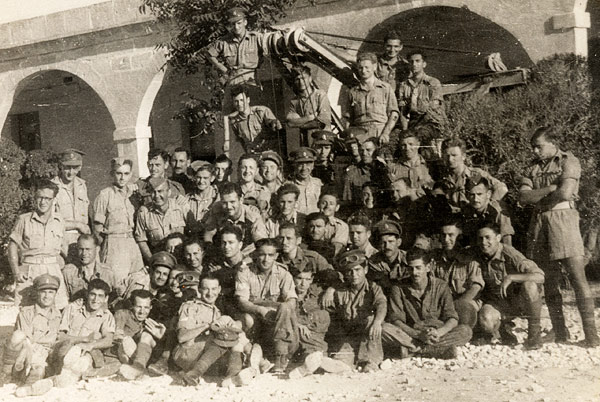
Yitzhak (standing, 3rd from the left)
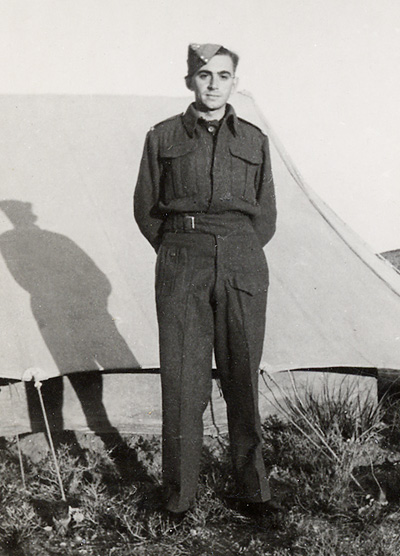
Yitzhak, 1943
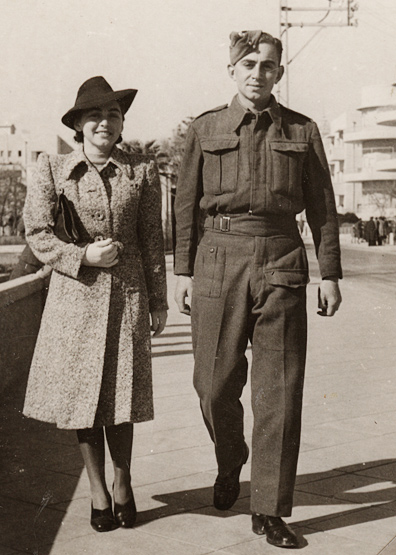
Toni and Yitzhak, Tel-Aviv, 31 March 1943
(Photo collection of Shulik Mir)
Yitzhak was later enlisted in the Jewish Brigade and was deployed to Italy. The Jewish Brigade had been created in September 1944 and fought in Italy from March to May 1945.
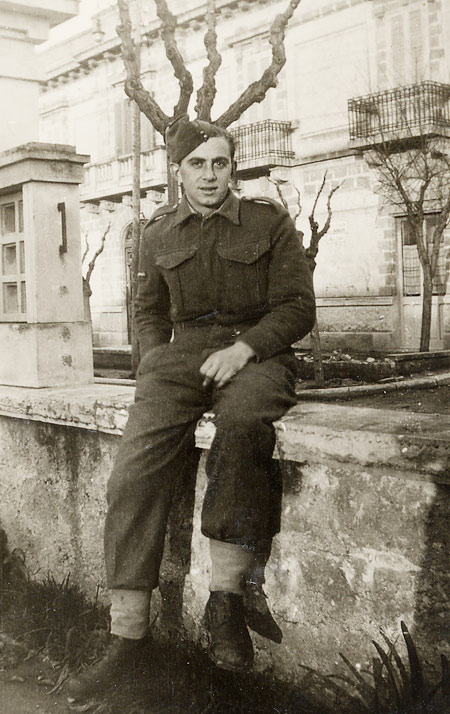
Yitzhak, Italy 1944
After the German collapse in 1945, the focus of the Jewish Brigade shifted to a rescue and rebuilding operation. Its members criscrossed Germany and Poland, looking for relatives, gathering survivors, bringing them to centers in Italy where they were cared for, and organizing their immigration to Palestine.
After the end of the hostilities, Yitzhak tried to locate his parents, searching in DP camps and lists of survivors, but in vain.
Yitzhak was also involved with the Aliyah Bet work, although "not heavily" according to Toni. According to her, he was at one point in the South of France - probably in Marseilles which was the Aliyah Bet center and the point of departure for immigrant ships. I assume he may have been involved in the transport of immigrants from Italy to France.

Yitzhak, Italy
(Photo collection of Shulik Mir)
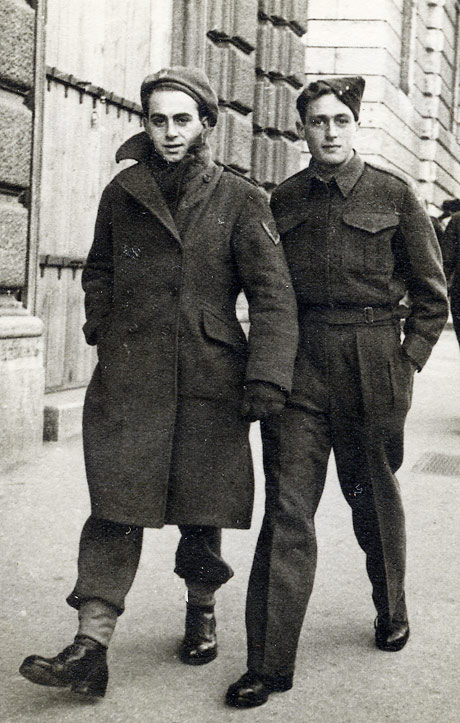
Yitzhak, Italy 1945

Yitzhak, Italy
(Photo collection of Shulik Mir)
After the war
During his holidays in Palestine, he met Riva. The two kept in touch, sending each other photos and letters.
In 1946, Yitzhak Katz and Riva Leibovich were married.
After he got married, Yitzhak worked as a truck driver.
Independance War
In 1948, during Independance war, Yitzhak served in the Negev Brigade, an infantry brigade consisting of four Palmach battalions. The Negev Brigade participated in many operations in the Negev Desert, including Operation Yoav in the latter part of the war.
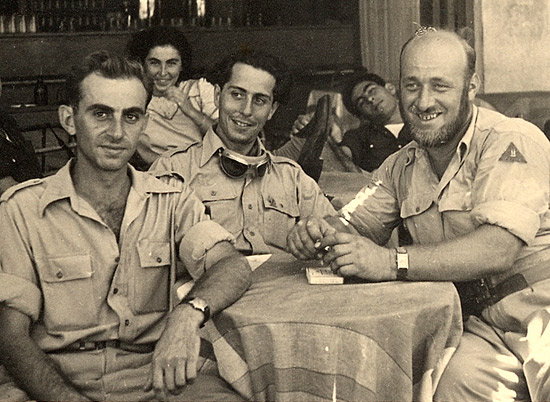
Yitzhak, War of Independance
(Photo collection of Shulik Mir)
By the time he was released from the military service he was a major.
Back to beeing a civilian, Yitzhak went to work for Darom yehuda, then Egged.
Starting as a driver, he eventually became a member of the Egged management and was part of the team responsible for building the new bus station in Tel Aviv.
Yitzhak fought again in the 1956 campaign.
In the 1967 six day war, Yitzhak was again in the army but didn't participate in combat, working instead in the war room.
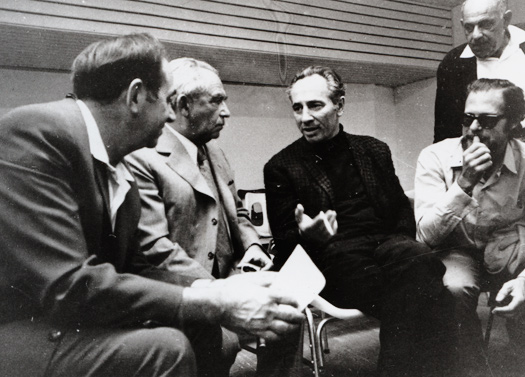
Yitzhak and Shimon Peres
Yitzhak and Riva perished in a car accident while vacationing in France on September 1th 1978.
Postscript
Tal and Liron mentioned that people in Gedera often come forward to tell them about Yitzhak, saying how loved he was, how he helped people by giving them work at Egged. Others have mentioned that he helped bring them to Palestine with Aliyah Bet after WW2.
- Extra Special Thanks:
- Most photos courtesy of Shulik Mir